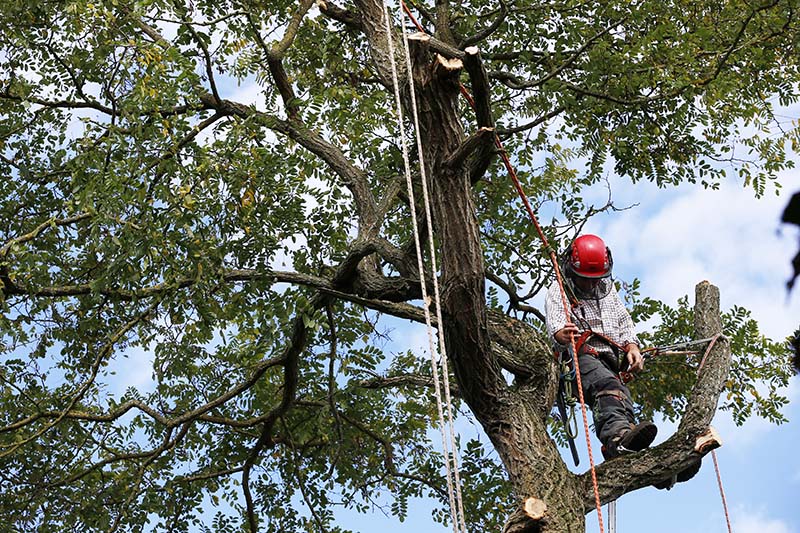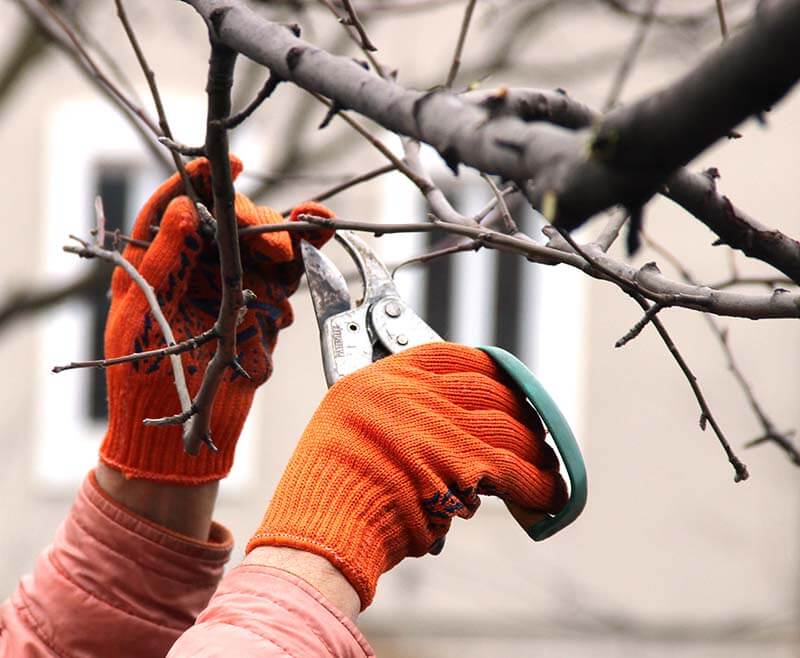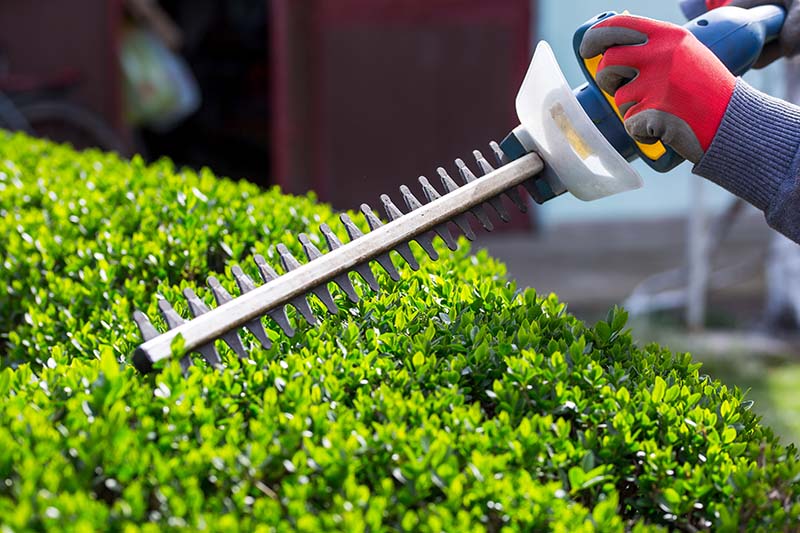Tree trimming & pruning cost guide
Tree trimming is done for three specific reasons—to improve a tree's appearance, to maintain a tree's health, and to eliminate hazardous branches. Aesthetic tree trimming keeps a tree at an appropriate size and improves the tree's form. Pruning can also improve the health of a tree by removing overgrowth or disease. Tree trimming is done for safety purposes when limbs are blocking a driver's line of sight or when branches are growing too close to power lines.
Jump to a section

When should I have my trees trimmed?
Most trees should be pruned during the late stages of winter. Pruning during dormancy has several benefits:
- Reduced Sap Flow – When trees are cut, the wounds produce resin and sap. The flow of these substances encourages fungal disease and attracts damaging insects. Removing large limbs in the dormant season reduces sap loss.
- Less Risk of Blight – Some flowering trees are prone to a bacterial condition called fireblight. Pruning during the peak of dormancy puts your trees at reduced risk for this disease.
- Stimulation of New Growth- Flowering trees that produce on new growth flourish in the next growing season when pruned during winter. The exception is trees that flower in very early spring; these flowering trees should be trimmed right after the flowering stage has ended.
When not to have trees trimmed.
You should not prune trees during the fall. According to the Arbor Day Foundation the healing time of cuts made during the pruning process is longest in autumn. This makes your tree prone to fungal disease, insect infestation, and bacterial illness. Branches that are completely dead can be removed during any time of the year.
Tree trimming methods for different tree species
For optimal health, most species of trees should be pruned based on their natural form. The five most common methods of tree pruning include:
- Preventative Pruning – Trimming young trees correctly helps the tree grow strong and in proper form. Remove branches that are too close together, broken, or growing in the wrong direction. Removing the branches closest to the ground help to heighten the crown of the tree. Pruning young trees can prevent corrective pruning on established trees at a later date.
- Crown Reduction—Reducing the crown of a large tree is accomplished by taking large limbs directly from the tree top. Care should be used to make proper lateral cuts, otherwise your tree could experience dieback. This method is the least favored in pruning and should not be used on conifers because of the risk of damage to a pyramidal crown.
- Crown Thinning—The crown of the tree can be thinned by approximately one-quarter in trees with branch overcrowding. Thinning the crown improves a tree's health by allowing better penetration of light and air. The least desirable branches—such as those that cross, rub, form a deep-v, or are broken and diseased—should be removed before healthy, advantageous limbs.
- Crown Cleaning — Perhaps the simplest method of pruning is crown cleaning. Cleaning the crown of the tree is merely removing branches which are broken, dead, or otherwise showing signs of disease or decay. This method does not intentionally alter the form of the tree.
- Crown Raising—Similar to the method used on a young tree, raising the crown of an older tree involves removing branches nearest the ground. This allows for clearance so a person can mow the lawn, walk across a path, or otherwise utilize the space under a tree.
Trimming a tree on your own

If you have a tree in the yard that is overgrown and shabby in appearance, you might want to attempt to trimming it on your own. Pruning your own trees may have some advantages; however, there are risky drawbacks as well.
If you have the knowledge, skills, manpower, and experience, it might be worth it to prune your own trees. However, if you are not quite sure how to go about tree trimming, this might be a service best left to the professionals.
Pros
- Saves money if you own the proper equipment
- Simple enough to trim very young trees if you know the basics of pruning.
- Free wood for campfires
Cons
- Cost of renting or purchasing equipment that you don't already own
- Liability of dropping limbs on someone else's property
- Making the wrong cuts, which could potentially kill a tree
- Labor intensive
- Disposing of the debris
- Bodily injury to you or others from saws, falls from ladders, or falling limbs
Additionally, OSHA and the US Department of Labor remind us that, "All tree trimming or removal work within ten feet of a power line must be done by trained and experienced line-clearance tree trimmers."
Cost of hiring a tree trimming service
The exact cost of hiring a tree trimming service will vary by area, the size and location of the tree, and whether or not you need the tree removed as an emergency service. Many companies offer a free estimate.
The following table gives an overview of average tree trimming costs:
| Size of Tree | Cost (Low End) | Cost (High End) |
|---|---|---|
| Less than 25 feet tall | $65.00 | $350.00 |
| 25 feet to 55 feet tall | $200.00 | $925.00 |
| More than 60 feet tall | $350.00 | $1500.00 or more |
*Emergency tree trimming service calls are extra, sometimes upwards of an additional $200/hr
Choosing the right tree trimming company
As with all home services, you want to make sure the tree trimming company you choose is reputable. When you are ready to choose a tree service:
- Ask for references
- Obtain a certificate of insurance
- Make sure the company's business license is current
- Check for complaints with the BBB
- Read the contract and make sure it specifies the entire scope of work
Pruning your trees is important. You can start when a tree is young to reduce corrective pruning or safety trimming at a later time. If you do have a tree that is large and needs a trim, use a licensed, reputable professional who is experienced in proper tree care.

Compare Prices
Select a service to begin